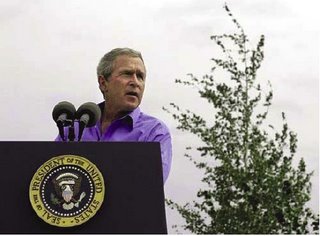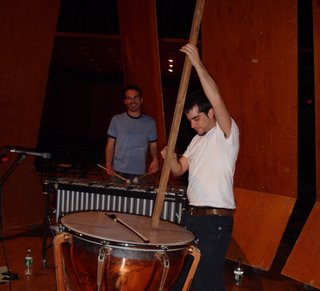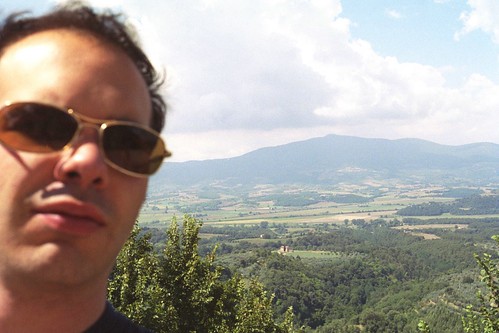
Ah google. My window to the world.
Today Google's logo was decorated by solar panels. Must mean it's earth day. Sure enough, a click on the logo took me to earth day search results. A few clicks later I found myself looking at the United States Government web page for earth day. How exciting! I wonder what the United States Government, the wealthiest, most moral, most visionary, most fantabulous government in the history of human civilization, was doing to celebrate our mother earth. What were the great resources of our great people doing to protect and serve our planet? What were the intentions of the brightest, healthiest, most-god-blessed civilization doing to preserve our life sphere for future generations?
Well, one thing I found was the Healthy Forest Initiative. Sadly, I have only learned about the HFI through liberally biased networks. I've heard something or other about it pressing legislation that would allow loggers the right to cut once protected forests under the guise of "preventing forest fire." But that was liberally biased. What is the government's side?
Why is the Healthy Forests Initiative Needed?
In recent years, most of us have seen televised pictures of wildland fires, evacuated communities, burned homes, and blackened forests, or witnessed these fires first hand. In 2002, Arizona, Colorado, Oregon and New Mexico, each had their largest timber fire in a century. The most devastating series of wildland fires in state history swept Southern California during October 2003. These fires killed 24 people, destroyed more than 3,700 homes, and burned 750,000 acres. Alaska set a record for acres burned in 2004. And, while fire has always helped shape our landscape, today's fires are not those of the past; they are often hotter, more destructive, and more dangerous to fight.
Wow. That's wierd. I wonder how these new mutant fires came to be. I mean, the forests seem to have been here much longer than we have. Why the sudden need for a rescue?
We know in part the reason for the difference. Compared with earlier times, many of today's forests often have unprecedented levels of flammable materials including among other materials: underbrush, needles, and leaves. In the interior West for example, Ponderosa pine forests range from Arizona and New Mexico northward into Idaho. A century ago such a forest may have had some 25 mature trees per acre and be easily traversed on horseback or by a horse-drawn wagon. Today that same forest may have more than 1,000 trees on the same acre creating conditions that are much too thick for the passage of a hiker. These tightly packed trees are smaller, weaker, more disease prone, and more susceptible to insect attack than their ancestors. Such forests form huge reservoirs of fuel awaiting ignition, and pose a particularly significant threat when drought is also a factor.
Hmmm. Forests are flammable? That's crazy. So the more they thrive, the more prone they are to self destruction. You'd wonder why God would make such a crazy, self defeating ecosystem.
Just as we know the reason for current devastating fires, we also know the solution. Wildfire requires three elements: heat, oxygen, and fuel. We can manage neither heat nor oxygen, but we can remove hazardous fuels and make them unavailable for fire's inevitable appearance. HFI helps make that happen by reducing unneeded paperwork and processes thus shortening the time between when a hazardous fuels project is identified and when it is actually implemented on the ground.
Oh. By hazardous fuels I'm sure you mean trees. I gotcha. Just wanted to be clear on that symbolic step forward. So HAZARDOUS FUEL = TREES. Okay. I'm clear. Yep. Sure, lets continue.
HFI accomplishes its goals through administrative reforms and legislative action.

Bush With Tree
As I went on reading, I found out that trees were at higher risk for insect infestation and disease. They were at risk of sustained periods of drought. And creepy crawly suburbia was not at risk since it burrowed its way into these cancerous trees. I also found a quote of Bush claiming "analysis paralysis."
hee hee. analysis paralysis.
While I am quite the expert of analysis paralysis and I do support bold, mythical steps in the escape thereof, Bush's context and logic techniques make me suspicious. Does that mean I'm paranoid?
Lets just put it this way.
Dear Mr. Government:
I support a healthy forest ecosystem that sustains itself for the remainder of our planet's existence. I understand that forest fires have been around since the oxygen and forests first met, and I strangely assume that the ecosystems have, through natural selection, assumed the adaptations that create the most sustaining characteristics possible. My question: is my assumption wrong? Are forests not able to behave in such a way as to secure their own future existence? Why are forests creating more "fuel" which makes fires "hotter" and "more destructive" (presumably towards the point of annihilation if we're concerned with saving them so much)? Are we in any way performing harm towards ecosystems? I mean, are we sacrificing one good for another?
Forgive me if I ask this, I don't mean to offend your integrity. But was the Healthy Forest Initiative in any way influenced by the profit-based intentions of the logging industry?
Thank you for your time.
Troy




